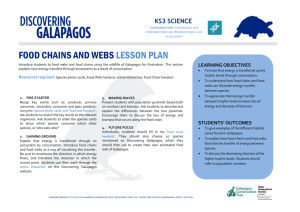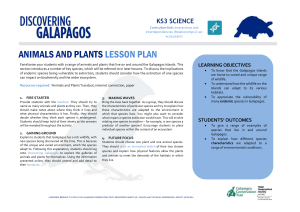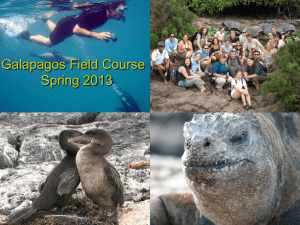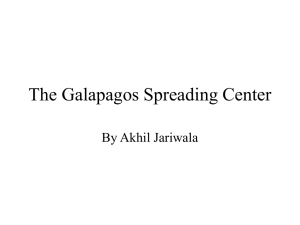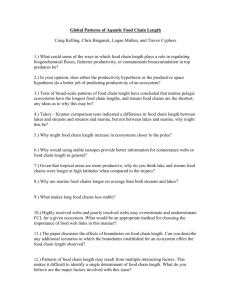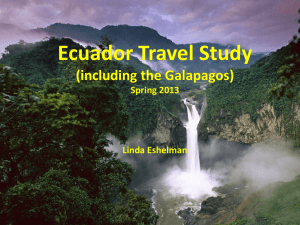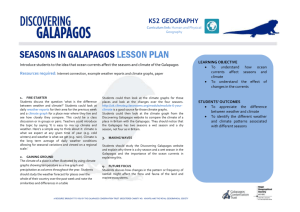1B2 Food Chains and Webs MSWord Lesson Plan Science KS2
advertisement
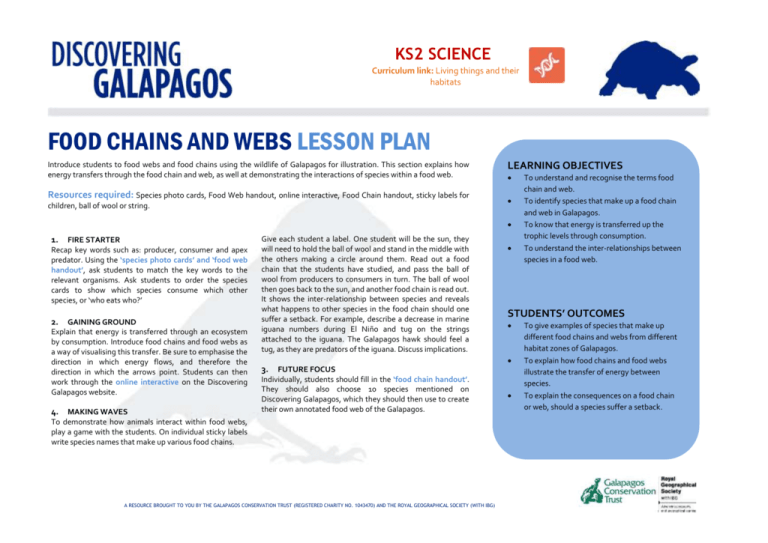
KS2 SCIENCE Curriculum link: Living things and their habitats FOOD CHAINS AND WEBS LESSON PLAN Introduce students to food webs and food chains using the wildlife of Galapagos for illustration. This section explains how energy transfers through the food chain and web, as well at demonstrating the interactions of species within a food web. Resources required: Species photo cards, Food Web handout, online interactive, Food Chain handout, sticky labels for children, ball of wool or string. LEARNING OBJECTIVES 1. FIRE STARTER Recap key words such as: producer, consumer and apex predator. Using the ‘species photo cards’ and ‘food web handout’, ask students to match the key words to the relevant organisms. Ask students to order the species cards to show which species consume which other species, or ‘who eats who?’ 2. GAINING GROUND Explain that energy is transferred through an ecosystem by consumption. Introduce food chains and food webs as a way of visualising this transfer. Be sure to emphasise the direction in which energy flows, and therefore the direction in which the arrows point. Students can then work through the online interactive on the Discovering Galapagos website. 4. MAKING WAVES Give each student a label. One student will be the sun, they will need to hold the ball of wool and stand in the middle with the others making a circle around them. Read out a food chain that the students have studied, and pass the ball of wool from producers to consumers in turn. The ball of wool then goes back to the sun, and another food chain is read out. It shows the inter-relationship between species and reveals what happens to other species in the food chain should one suffer a setback. For example, describe a decrease in marine iguana numbers during El Niño and tug on the strings attached to the iguana. The Galapagos hawk should feel a tug, as they are predators of the iguana. Discuss implications. STUDENTS’ OUTCOMES 3. FUTURE FOCUS Individually, students should fill in the ‘food chain handout’. They should also choose 10 species mentioned on Discovering Galapagos, which they should then use to create their own annotated food web of the Galapagos. To demonstrate how animals interact within food webs, play a game with the students. On individual sticky labels write species names that make up various food chains. A RESOURCE BROUGHT TO YOU BY THE GALAPAGOS CONSERVATION TRUST (REGISTERED CHARITY NO. 1043470) AND THE ROYAL GEOGRAPHICAL SOCIETY (WITH IBG) To understand and recognise the terms food chain and web. To identify species that make up a food chain and web in Galapagos. To know that energy is transferred up the trophic levels through consumption. To understand the inter-relationships between species in a food web. To give examples of species that make up different food chains and webs from different habitat zones of Galapagos. To explain how food chains and food webs illustrate the transfer of energy between species. To explain the consequences on a food chain or web, should a species suffer a setback.
